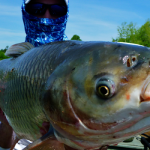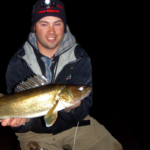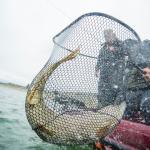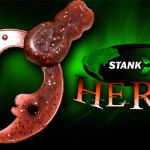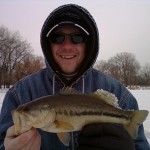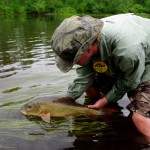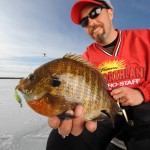By: Kenny Lookingbill – Date Posted: May 11, 2011
Springtime crappie fishing is one of the most diverse styles of fishing there is. For example, one day you might find yourself fishing with a float, while the next day you could be using jigs. Fishing during this period is a feast or famine. However, fishing for crappie during the spring season is some of the most rewarding and entertaining fishing there is.
For instance, some of my largest crappie have been caught at this time of the year, including a massive 17 inch fish taken on a Charlie Brewer slider jig in the spring of 2009. Much of what crappie are caught on is dependent on weather conditions, water temperatures, and water clarity.
Early in the season when the water is still within 40 degrees, I focus on main lake points as well as structure close to the main lake channel. Fish begin moving from deep water where they held during the winter months and begin staging towards the shallows.
My favorite structures to target are the sunny side of docks and brush piles. Crappie are utilizing these structures sunning themselves and feeding on smaller invertebrates. This type of fishing early in the year requires a lot of patience and mobility because the fish tend to be lethargic and scattered. In addition they are also stubborn about what they eat. At this time, I use a small float with a 6 inch fluorocarbon leader and a 1 inch Berkley Gulp Alive Fish Fry on a 1/64 oz. jig suspended next to posts or over sunken brush piles.
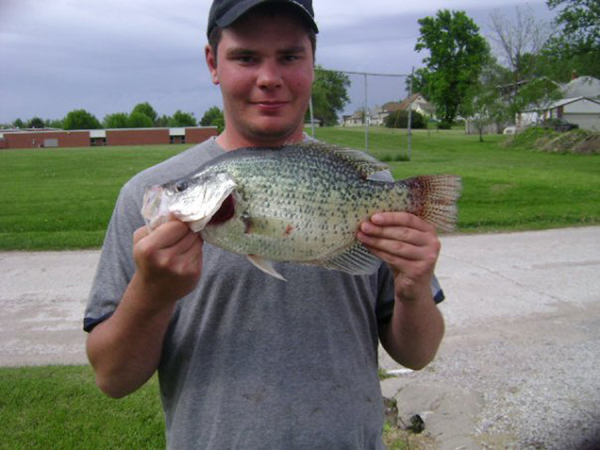
As the water warms into the mid to upper 40 degree range, fish begin concentrating themselves more and move toward weedy flats as they are moving into spawning habitats. They are also more aggressive as they begin heavily feeding in order to meet the metabolic needs of spawning.
At this point fish can be caught by a variety of methods. One popular and easy way to catch a limit of crappie is using small floats and live bait such as minnows and night crawlers. In addition, small jigs and grubs are also used efficiently and effectively.

My favorite methods to use at this time are swimbait style grubs such as Mister Twister’s Sassy Shads. In particular, a Charlie Brewer 1.5 inch slider grub rigged on Blakemore 1/32 oz. Road Runner jig is my preferred choice. The paddle tail on the slider creates a swimming motion similar to small baitfish while the spinning blade on the jig imparts vibration and flash that really attracts the attention of fish.
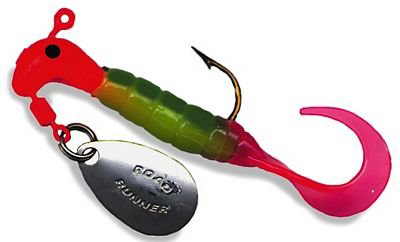
By the time the water reaches 60 degrees, the crappie spawn is in full swing. During the spawn period crappie are concentrated in the shallows, mostly on beds. With the aid of polarized sunglasses their depressions are seen by boat, or from shore. Located in wind protected bays, their nests are in less than six feet of water. Females occupy the nests while male guard the nest from intruders.
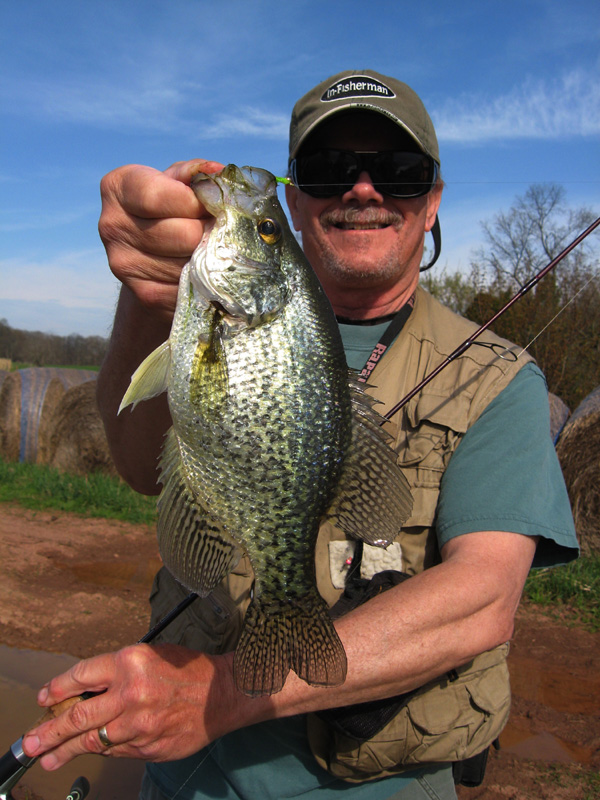
Not only can limits of fish be caught, but trophies can also be had too. You can do almost no wrong at this stage of the crappie spawn with the fish aggressively guarding their nests. Traditional jig and grubs as well as tubes work very well. Sometimes crappie are caught on larger lures such as Rapala Husky Jerks when anglers are targeting bass.
At this time, aquatic vegetation might be an issue. This can be combated by using a small pencil float to keep your lure at a constant depth above the submersed vegetation to avoid getting your lure fouled in weeds.
Time of the day has little bearing on success when fishing the crappie spawn, but has an obvious impact on prespawn fishing. To better clarify myself with the factor about seasonal timing, I revert back to discussing the prespawn period. For instance water temperatures are still relatively cool and crappie seek the warmest water they can find. This results in them being more active and therefore more likely to feed. During this time, I tend to target crappie later on in the day in the mid afternoon hours when the sun reaches its high point and surface temperatures reach their peak. Once the fish are active in spawning, success can be had at any time from early in the morning hours till before sunset with some additional active feeding windows mixed in.
Water clarity also plays a large role in lure selection and angling success. Utilizing basic color principles such as darker colors for murkier water and natural colors for clear water pays dividends. For murky water, my favorite colors are junebug, dark green, dark yellow, and black. In clear water I stick with bright colors such as chartreuse and fluorescents, and white when threadfin shad are present. A fluorocarbon leader may be used conjunction with a jig and a minnow in extreme clear water situations but be aware of any regulations restricting the use of minnows on certain lakes.
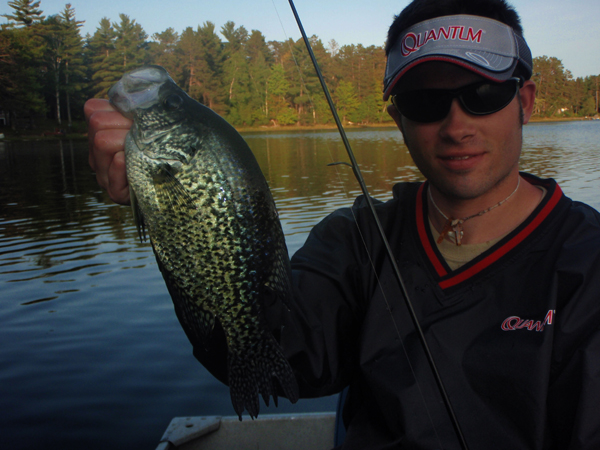
Water conditions, water temperatures, and water clarity are variables one cannot control but tackle is one variable the angler has complete control of. I use a 6 foot light action Abu Garcia Condolon spinning rod with a Pflueger President 6725 reel rigged with 8 lb. Berkley Fireline. The light superline provides casting distance and strength to handle big fish that might be accidentally caught and not targeted. However, if you prefer fluorocarbon, Berkley’s Vanish 6 lb. test will do, and if you prefer monofilament line Berkley Trilene XT 6 lb. test will work as well.
Whether you are looking for light, crispy fillets for the dinner table, with selective harvest in mind, or just a few hours of entertainment, fishing for crappie in late spring is some of the easiest fishing known to all of man-kind. It can be done in relatively simple means without the hassle of carrying around tackle bags full of gear. Crappie tackle is relatively inexpensive compared to other types of tackle. Something as simple as a push-button combo can be used or a decent spinning combo can be purchased for under $100. Likewise the costs associated with jigs and plastics are minimal.

What is another good thing about fishing for springtime crappies you might ask? It is a great way to get beginning anglers started on fishing and keep interested in. Early success will be experienced due to the relative ease of the techniques used to catch and enjoy the aggressiveness of the crappie.



